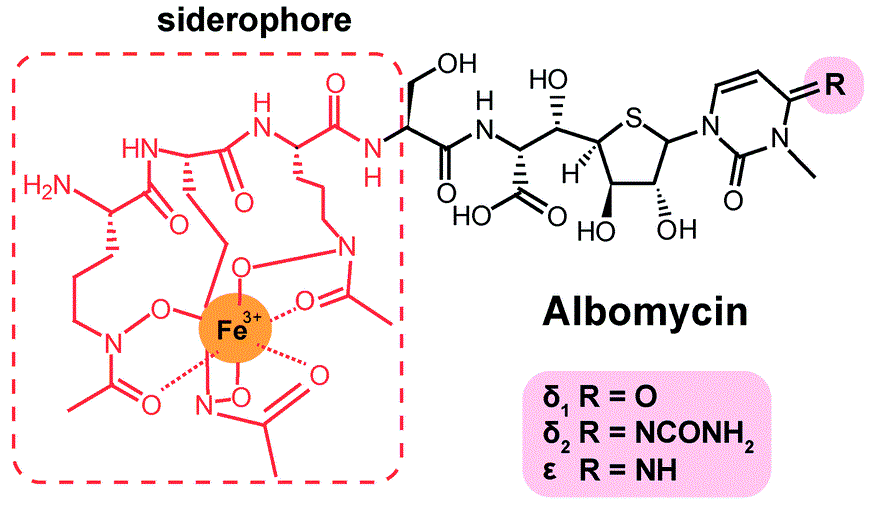The idea of the “magic bullet” that perfectly breaches only target cells and proceeds to kill them, has long been the fantasy of pharmacology. This fantasy is being brought closer to reality every year, and the research on albomycin compounds shows definite progress towards this end goal. And new research shows that there is more albomycin diversity than previously thought – an untapped potential of antibiotics.

Albomycins are small polypeptide antibiotics that contain a group that resembles siderophores that bind iron. This helps the compound enter target cells, and once their defense is breached, the part that acts as a siderophore, the trihydroxamate group, is cleaved off, and the rest of the molecule acts as an antibiotic. More specifically, the remaining part acts as a aminoacyl-tRNA synthetase inhibitor, leading to blockage of protein biosynthesis and cell death. The albomycin group molecules essentially use the iron-complex group as a ticket to enter the bacteria, and once admitted in, the ticket stub is ripped and the antibiotic does its damage.
These hi-tech antibiotics are made by some streptomycetes naturally. Back in late 2018, total synthesis of an albomycin for the first time (1). One of the three synthesized albomycins (1b) showed definite antibacterial activity against S. aureus and S. pneumoniae bacteria. These results showed the feasability of full synthesis of the compound group, as well as bringing hope to the viability of albomycin drugs as antibiotics for fighting Streptococcus infections.
Recent developments at Skoltech University of Russia has performed biolinformatic assays that concluded that there are much more albomycin encoding genes in the genome than previously identified (2). This exciting news means that there is much more albomycin diversity than previously thought, and some of these just might be very viable for human use. With more research underway, the drug group has huge unexplored upside potential that demands further research.
By: Pavle Mihajlovic